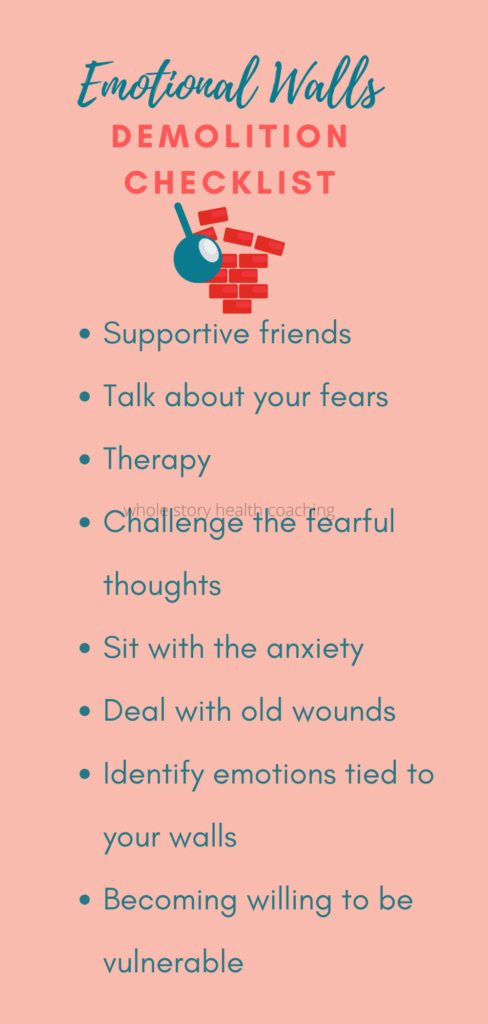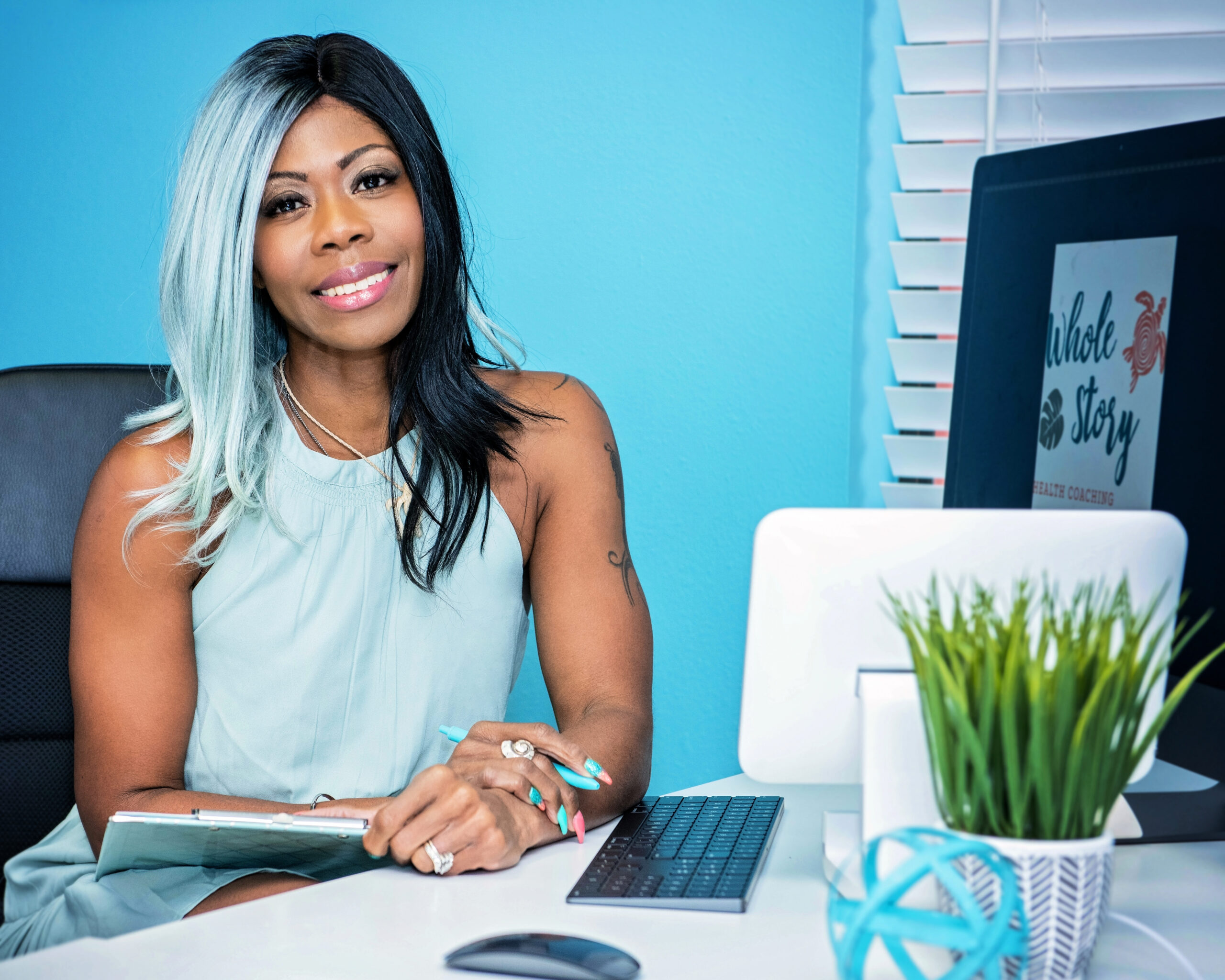Emotional walls have been a major part of my personal growth and development. They were my go-to defense mechanism and protected me when I didn’t have the strength or the tools to protect myself in a healthy way.
Most of the time, before I was even aware of what was happening, I would automatically shield myself from anything or anyone that felt like a threat.
I had a hypervigilant threat detection system and a dislike of being vulnerable.
Some threats were operating under my radar. But all of them guided almost every move I made. My thoughts, choices, and attitudes were all filtered through emotional defensiveness. I saw vulnerability as weakness. In fact, “I loathe vulnerability” was one of my catchphrases. Even when I wasn’t saying it, I was living it out.
A history of childhood bullying, hurtful relationships, and toxic friendships left me feeling like prey. Since I wasn’t able to run away from it all, I built walls. To be more exact, I created an emotional fortress.
Although emotional walls aren’t the best option, sometimes they’re the only option we have available. The downside is that we can wall ourselves into an unhealthy place… a mental and emotional prison — while walling out what (and who) would actually be beneficial.Tweet
Trapped Behind the Walls
My awareness of the pain that the walls were causing me (and others) began when I started to notice a disturbing pattern. Whenever I felt too close to someone — in both relationships and friendships, I pushed them away. As long as they remained at a certain distance, I was great.
Another realization was that my walled-off emotions were keeping the real me trapped inside. On the rare occasions that I was able to find the courage to take a look at (even the smallest bits of) myself, I would become overwhelmed and shut down. I was a victim of my own thinking and I had created walls that were hard to overcome.
I thought that closeness was what I wanted. But, what I subconsciously craved was closeness at a distance. The distance protected me from being hurt. Unfortunately, it also prevented me from being close enough to be loved — or feel too deeply.
Char Aukland
Even when I realized that my emotional walls were preventing me from healing, tearing them down felt counterintuitive — like I was betraying myself.
At times, I was tempted to stop the process and rebuild them. At other times, I tried desperately to go back to my safe place — my mental and emotional fortress.
Finally, I stopped running. I stopped looking for the easy way out. I stopped building walls and started removing the bricks.
Demolishing them and growing stronger was a challenge. Vulnerability still felt like the enemy. But, I was (finally) beginning to understand that being able to feel, process, and express emotion were actually strengths and the paths to freedom.

How to Demolish Your Emotional Walls
Each of the steps below start with a verb…because intentional action is required to initiate, sustain and maintain any changes we make. Without being an active participant in our lives, we start to adopt the mindset that life is happening to us, rather than for us. Mindset is key.
Connecting with wise trustworthy friends
Good friends are an important part of being able to process what we are feeling. Often, we are so caught up in the moment, the experience, and/or our emotions, it becomes difficult to see clearly.
It can be tempting to look for advice that supports our side, but the goal is guidance that will help us in our healing process.
Here’s a tip: make sure that you look to healthy, wise friends. Avoid advice that makes things worse or that will hurt you in the long run. It may not be what you want to hear, but wise friends can provide what you need to hear.
Establishing a safe place to talk about your fears
Our fears can grab our attention and distort our senses. What we see, hear, and feel are filtered through the lens of what we fear.
This makes it very difficult to find the truth. However, when we face the fear and learn to understand what it’s trying to communicate to us, we gain the ability to overcome it.
Having a safe place to discuss these fears, without judgement or someone trying fix us, is an important part of processing and overcoming our anxieties.
Going to therapy
CBT or cognitive behavioral therapy, is a great way to learn how to navigate the difficult emotions and circumstances that trigger us into putting up walls.
Since therapists are trained to deal with the fallout from experiencing painful emotions, therapy is an ideal tool to have in your toolbox.
Unfortunately, the stigma associated with therapy (and mental health) can prevent people from seeking the help they need. Feeling our emotions and getting help to process them are not weaknesses. Both are strengths that can be made stronger by seeking professional help.
Challenging fearful thoughts
Challenging fearful thoughts is one of the hardest and most intentional aspects of tearing down our emotional walls.
Over the years, our fears can become “protectors” and challenging them can feel overwhelming and like we’re giving up a part of our armor.
It is a process. Safe, wise friends and a therapist won’t always be available. Learning how to address our fears when we’re all alone is a necessity that helps to build our resilience and our trust in our ability to self-soothe and engage in healthy coping.
Sitting with the anxiety
The anxiety of feeling rejected or abandoned was probably one of the hardest things about my process. At times, it felt mentally, emotionally, and even physically overwhelming.
In my worst moments, I would get chills and fatigue would set in. It’s no wonder that it took me so long to even attempt to sit through my various anxieties and face them. However, once I began to develop this skill, it became easier.
I was able to treat my anxiety as a welcomed friend and listened eagerly to what it was trying to tell me about the inner state of my being. This reframing of my perspective allowed me to heal in ways that went beyond my expectations.
Dealing with old wounds
This process is also best addressed in therapy. There are many wonderful resources on the Internet that can help start the process, but because some wounds are so hurtful and so destructive, I recommend a professional be your guide.
Often, these unhealed wounds direct our thoughts, distort our vision, and wrongly interpret other people’s words, actions and behaviors. Old wounds are powerful foes, that must be addressed in order to move forward.
Identifying emotions tied to your walls
Since our walls have been built over time and are sometimes an automatic reaction, we aren’t always aware of the underlying emotions.
Learning to identify them gives us the opportunity to challenge their validity. Just because we “feel” a certain way or react emotionally, doesn’t mean that we have accurately interpreted the situation. As our self-awareness increases, we begin to clearly see the building blocks of our walls…like fear and old wounds.
Becoming willing to be vulnerable
This was something that I turned away from, initially. I could not muster that willingness. Even being vulnerable with myself was distasteful to me.
Slowly and with the help of very patient friends and a great therapist, I learned that there was no shame in being vulnerable. There was no shame in my emotions. There was no shame in my weakness.



